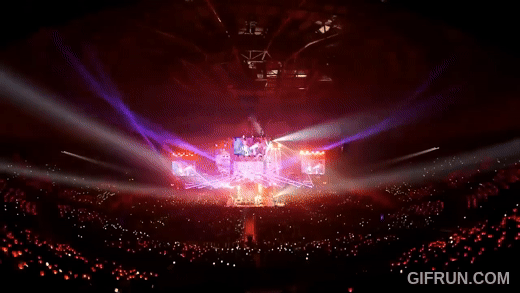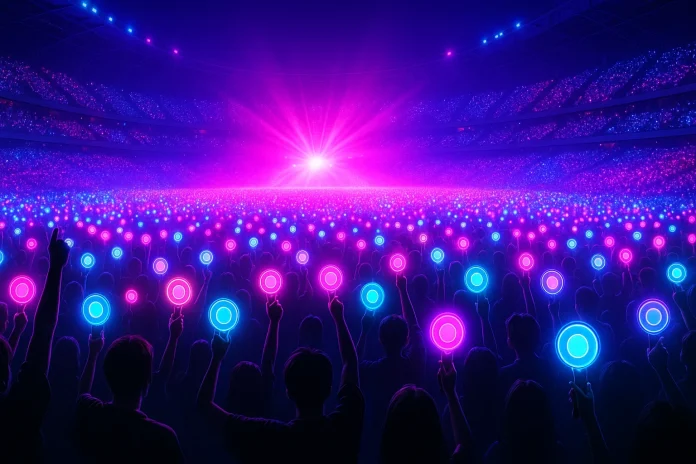When you step into a K-pop concert, the first thing you’ll notice isn’t just the music or the crowd — it’s the waves of glowing lightsticks pulsing in sync with the beat. These aren’t just flashy accessories. For millions of fans worldwide, K-pop lightsticks are symbols of loyalty, identity, and cultural pride.
But how did these little glowing devices become such an iconic part of the K-pop experience?
Read More – Wearable Tech That Tracks Your Mood: Hype or Help?
The Origins of K-pop Lightsticks: A Bright Beginning
Lightsticks, or “official fan lights”, didn’t start out as the high-tech, Bluetooth-enabled devices we know today. Back in the early 2000s, K-pop fans would wave colored balloons or simple glowsticks to show support for their favourite idols.
For example, TVXQ fans used red balloons, while BIGBANG fans brought yellow glowsticks. These early versions were simple but powerful — they gave fandoms a visual identity.
As K-pop grew globally, so did the design and importance of the lightstick.
What Makes a Lightstick “Official”?
Almost every K-pop group now has an official lightstick, designed and released by the group’s agency. These aren’t just for decoration — they serve multiple purposes:
- Authenticity: Buying the official lightstick supports the artist and confirms your loyalty.
- Synced Technology: Many lightsticks now sync via Bluetooth to light up in time with the music or display colour waves controlled by concert staff.
- Design Language: Each lightstick is carefully branded to match the group’s identity.
Take BLACKPINK’s hammer-shaped “BI-ping-bong”, or BTS’s ARMY Bomb, which evolves with each tour. These aren’t just merch — they’re cultural artefacts.

Fandom Pride in the Palm of Your Hand
Ask any K-pop fan, and they’ll tell you: owning a lightstick feels personal. It’s not just about waving something in the air — it’s about belonging.
When the venue lights go down and thousands of synchronised lights glow as one, fans feel united, seen, and part of something bigger. It’s a shared language — even if you’re thousands of miles from Seoul.
From South Korea to the World
K-pop lightsticks have become a global phenomenon. At concerts in Paris, LA, Manila, or Jakarta, you’ll see fans proudly waving their lightsticks — some even customising them with stickers, charms, or protective cases.
This global appeal also turned them into collectors’ items. Limited-edition lightsticks, anniversary versions, and collaboration drops sell out fast — some even resell for hundreds of dollars online.
They’re no longer just for concerts — they’re part of everyday fan expression.
Lightsticks in Pop Culture & Branding
Agencies don’t take lightstick design lightly. It’s now a core part of brand identity.
- TXT’s MOA Stick has a dreamy celestial design.
- SEVENTEEN’s Carat Bong (yes, that’s the name!) resembles a diamond.
- ATEEZ’s lightstick was co-designed with fans.
These designs spark memes, nicknames, and trends on social media. They’ve even been featured in music videos and ad campaigns, turning lightsticks into cultural symbols.
Why They Count
At first glance, a K-pop lightstick might seem like a simple glowing toy. But look closer, and you’ll see:
- Years of fandom history
- Global identity
- Cultural storytelling
- Tech-meets-emotion design
In a world of digital music and online fandoms, lightsticks offer something tangible — something real you can hold, wave, and treasure. They glow not just with LEDs, but with emotion, history, and love.
Final Thoughts
The next time someone asks you, “What’s the big deal with those glowing sticks at K-pop concerts?” — tell them this:
They’re not just lights.
They belong in plastic and pixels.
They’re a culture you can see glowing in the dark.
And that’s the cultural power of K-pop lightsticks.



